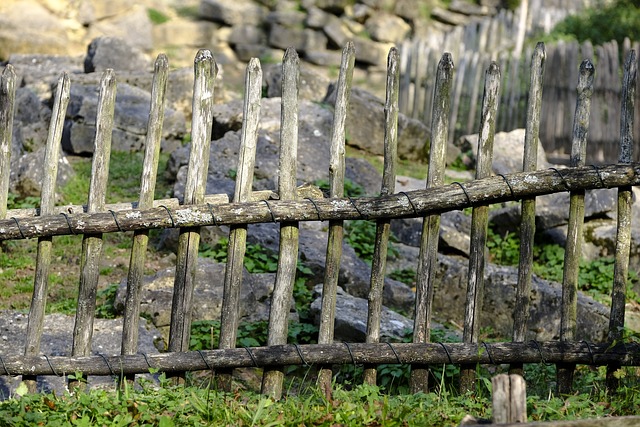Considering a wooden fence for your New Bedford, Massachusetts property? This comprehensive guide delves into the intricacies of professional installation services. From understanding your property’s unique requirements to navigating local regulations, we’ll explore the benefits of hiring experts. We break down key components, the step-by-step installation process, and post-installation care tips for longevity. Additionally, learn about essential design considerations and permits, ensuring a beautiful and compliant fence that enhances your outdoor space.
- Understanding Wooden Fence Requirements for Your Property
- Benefits of Choosing a Professional Installation Service
- Key Components: Materials and Design Considerations
- The Installation Process: From Planning to Completion
- Post-Installation Care: Ensuring Longevity and Beauty
- Local Regulations and Permits: What You Need to Know
Understanding Wooden Fence Requirements for Your Property
When considering a wooden fence installation for your New Bedford property, understanding your specific requirements is essential. Every yard and aesthetic preference is unique, so it’s important to define several key factors before making a decision. Firstly, determine the purpose of your fence; is it for privacy, security, or aesthetic appeal? This will influence the style, height, and type of wood chosen. Next, consider the layout of your property and any local regulations regarding fencing. Some areas have restrictions on heights or certain types of wood, so ensuring compliance from the outset saves time and potential fines later. Additionally, take note of nearby structures, trees, or power lines that might affect the fence’s placement and design.
Benefits of Choosing a Professional Installation Service
When considering a wooden fence installation, opting for a professional service offers numerous advantages. Expert installers possess the necessary skills and equipment to ensure your fence is not only securely erected but also aligns with local regulations and building codes. They can provide valuable insights into the best materials for your specific needs, climate, and terrain, ensuring long-lasting durability.
Professional installation services prioritize safety, which is paramount when handling heavy machinery and structures. Their expertise minimizes the risk of accidents or damage to your property during the installation process. Moreover, these services often come with warranties, offering peace of mind and guaranteed satisfaction for years to come.
Key Components: Materials and Design Considerations
When considering wooden fence installation services, understanding key components—materials and design considerations—is essential. The choice of materials plays a significant role in determining the durability, aesthetics, and overall performance of your new fence. Typically, this includes selecting between various types of wood, such as cedar, pressure-treated pine, or hardwoods, each with unique properties that influence cost, appearance, and longevity. Additionally, factors like post spacing, rail height, and picket styles contribute to the design, ensuring it aligns with both personal preferences and local regulations.
Design considerations encompass more than just visual appeal; they also involve practical aspects. For instance, deciding on a fence height and whether to incorporate additional features like gates or decorative panels can impact privacy, security, and functionality. Moreover, considering the layout of your property and surrounding elements, such as trees or existing fences, helps create an aesthetically pleasing and structurally sound design that seamlessly integrates into its environment.
The Installation Process: From Planning to Completion
When you opt for wooden fence installation services, the process begins with a detailed planning phase. Experts will assess your property, taking into account factors like existing structures, topography, and accessibility. They’ll discuss your preferences, material choices, and design options, ensuring your vision aligns with structural soundness and local regulations. This meticulous planning guarantees a customized solution tailored to enhance your outdoor space.
Installation itself involves multiple stages. After preparing the groundwork, the team sets posts securely into the ground using advanced techniques. Panels are then carefully fitted, joined together, and secured for strength and stability. Throughout the process, skilled technicians ensure precise measurements, seamless connections, and a neat finish. Finally, the fence is treated with protective coatings to withstand the elements, completing a robust and aesthetically pleasing barrier that defines your outdoor sanctuary in New Bedford, Massachusetts.
Post-Installation Care: Ensuring Longevity and Beauty
After your wooden fence is installed, proper care is essential to maintain its longevity and aesthetic appeal. Regular cleaning and maintenance can prevent damage caused by elements like dirt, mold, and mildew. A simple washing with soapy water and a soft brush will keep your fence looking fresh.
Additionally, applying a fresh coat of sealant every few years will protect the wood from moisture intrusion and UV rays, extending its lifespan significantly. Keeping the area around the fence clear of debris and overhanging branches will also safeguard it from potential damage caused by weather conditions or passing pedestrians.
Local Regulations and Permits: What You Need to Know
When planning a wooden fence installation in New Bedford, Massachusetts, it’s crucial to familiarize yourself with local regulations and permitting requirements. These guidelines are in place to ensure safety, maintain neighborhood aesthetics, and prevent potential legal issues. Different municipalities have varying rules regarding fence height, materials, and placement, so it’s essential to check with the local building department or town clerk for specific details.
Obtaining the necessary permits is a vital step in the installation process. Permits ensure your project complies with local codes and often require submitting detailed plans, specifications, and possibly even design renderings. This process may take time, so it’s best to start early to avoid delays and ensure a smooth construction process for your new wooden fence.
